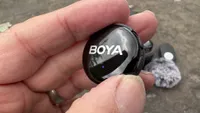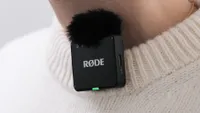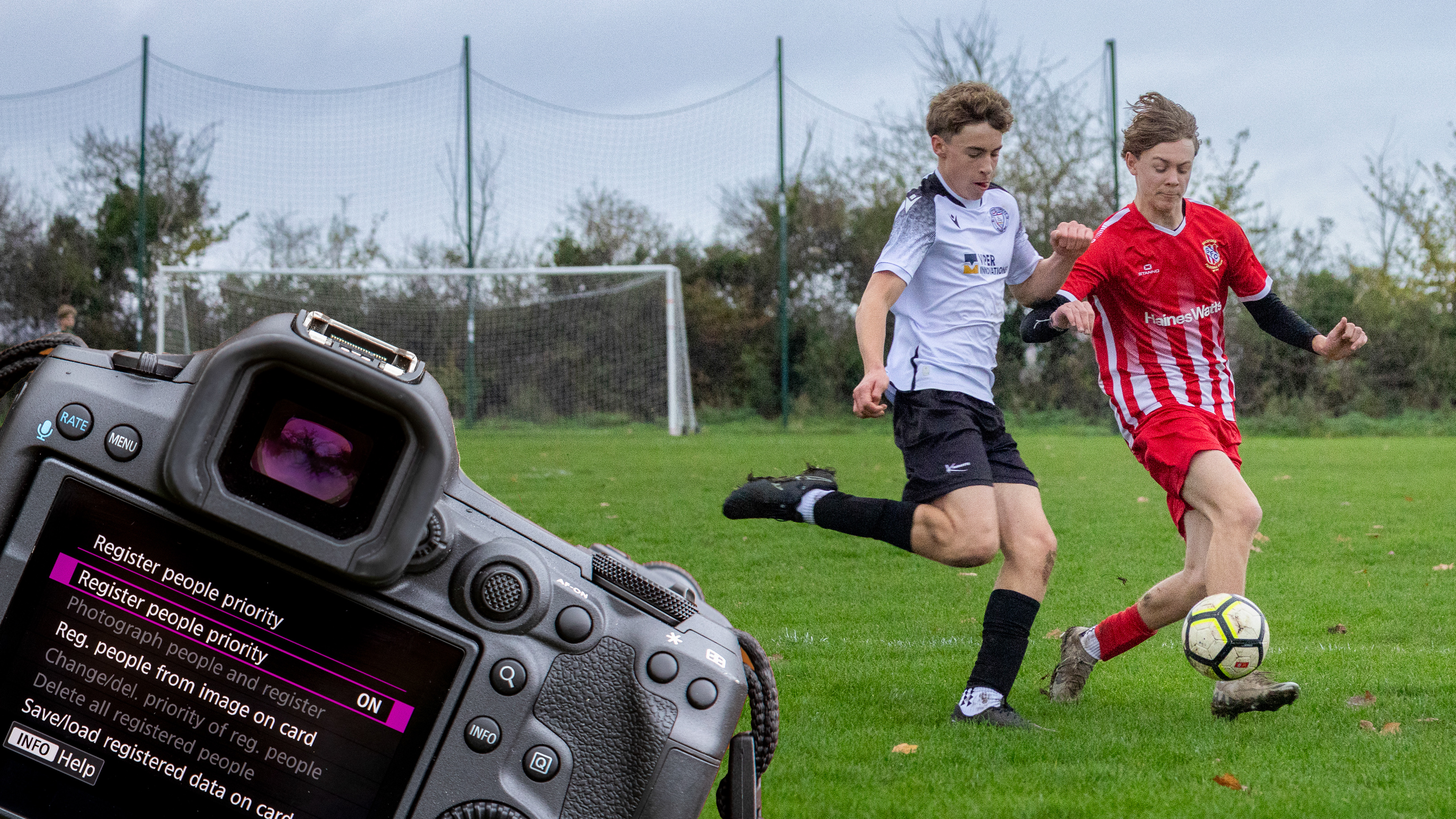Digital Camera World Verdict
The Boyamic 2 is an improvement on 2024’s original Boyamic in relation to design and performance. Its lighter and smaller transmitter mic is more discrete, and it has lost the coloured buttons of its predecessor, so it now looks more on par with other pro mic kits such as the Rode Wireless Go 3 (though it’s cheaper than that rival model). The transmitter’s built-in AI chip does a decent job of reducing background noise with less distortion being added to the subject’s voice (especially compared with the cheaper Boyalink 3, which was released at the same time as the Boyamic 2). The transmitter’s built-in 32-bit onboard recording feature offers a safety net as you can use it to patch holes caused by signal dropout when the mic loses line of sight with the receiver.
Pros
- +
Onboard recording
- +
Effective AI noise reduction
- +
High quality audio
Cons
- -
Signal drop-out
- -
Slightly loose windshield
Why you can trust Digital Camera World
Back in April 2024, I reviewed the Boyamic, a wireless mic kit that enabled you to clip a plastic-brick-style mic onto your shirt and transmit your voice wirelessly to a receiver plugged into your camera or smartphone. The original Boyamic also had a noise cancellation feature to reduce distracting sounds such as passing traffic. In May 2025, Boya released an updated version of their pro-targeted mic - the sensibly named Boyamic 2! I was pleased to get hold of a review unit to test prior to the kit’s launch. I was especially interested to see how the Boyamic 2 compared with the Boyamic, especially as I gave the original four stars for its excellent performance.
At the same time as the Boyamic 2’s 2025 release, Boya released the Boyalink 3 - another wireless mic kit. What’s the difference between the two? Well, the Boyamic 2 is Boya’s flagship mic kit and is aimed at the needs of professional sound recordists. The cheaper Boyalink 3 is an entry-level wireless mic kit that lacks some of the advanced features of the Boyamic 2, such as onboard recording.
Let’s talk a little about onboard recording, as it’s an important and valuable feature. As well as reviewing gear for Digital Camera World, I sometimes freelance as a video maker in the corporate sector. A few days before writing up this review, I recorded a Rugby Coaching conference in Wales using a RØDE Wireless Go 3 kit and a camcorder. About half an hour into a talk, I realised that I had forgotten to turn up the input level of the presenter’s mic using a knob on the camera. This meant that the sound being broadcast by the transmitter clipped onto the presenter wasn’t being recorded on my camcorder! A sacking offence! Fortunately, when you turn on the RØDE Wireless Go 3’s transmitter mic, it automatically activates onboard recording. So the presenter’s missing audio was available as an audio file that could be downloaded from the microphone to the PC! Big sigh of relief!
It is therefore reassuring to see that the Boyamic 2 has this essential onboard recording feature built into its transmitters. The cheaper Boyalink 3 kit does not, so if you can’t guarantee (or afford) a re-take, then the Boyamic 2 is well worth the extra purchase price!
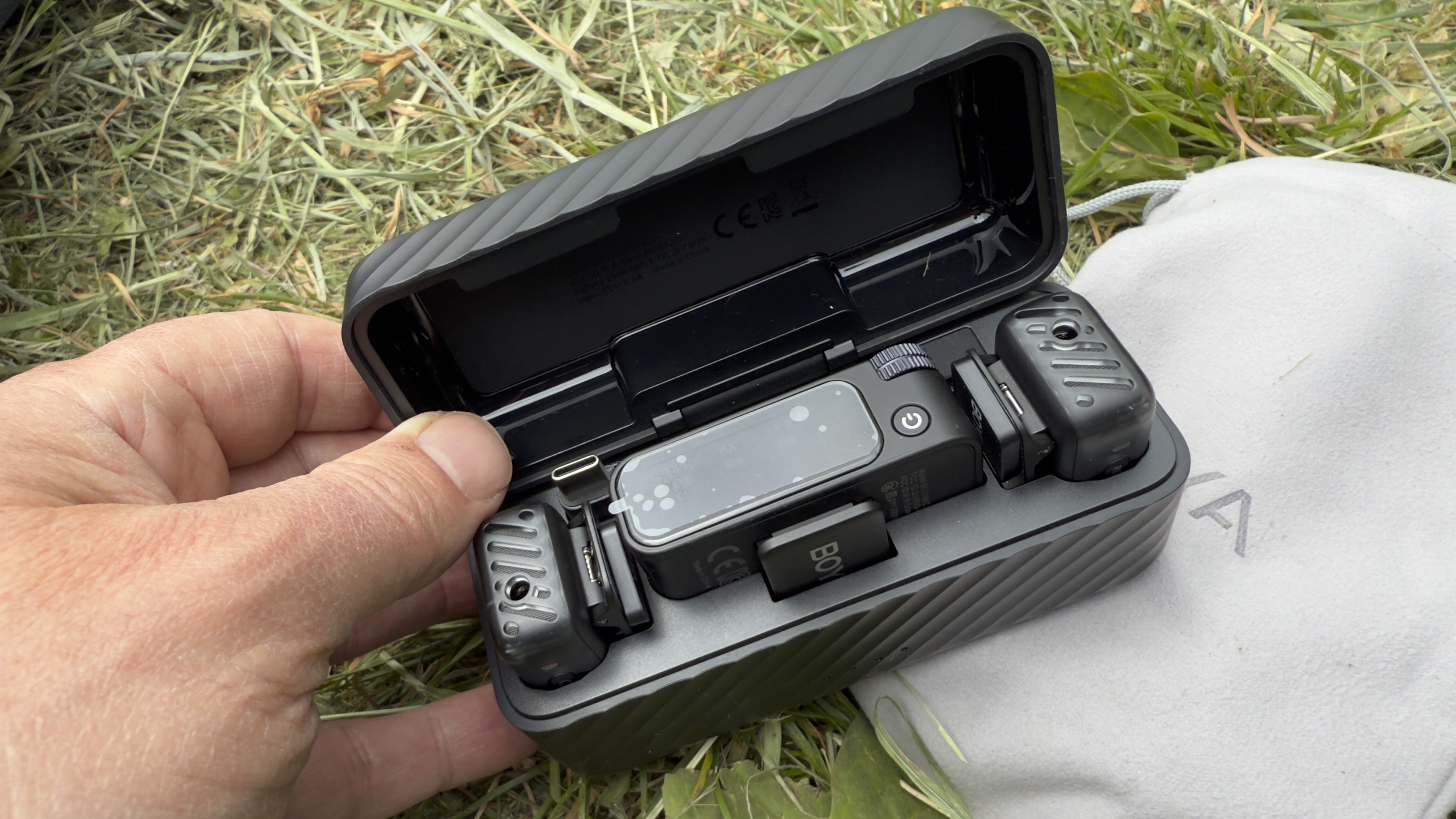
Boyamic 2: Specifications
Transmitter Dimensions | 40 × 25.4 × 19.76 mm |
Transmitter Weight | 20.5 g |
Sample Rate / Bit Depth | 48 kHz / 24-bit, 48 kHz / 32-bit, (with onboard REC on) |
Signal-to-Noise Ratio | > 90 dB |
Max SPL | 115 dB |
Noise Cancellation | AI Noise Cancellation -40 dB (Strong) & -15 dB (Light) |
Frequency Response | 20 Hz - 20 kHz |
Latency | 25 ms |
Transmission Range | 300 m |
Battery Life | 9 hours (with AINC & onboard REC off); 6 hours (with AINC & onboard REC on) |
Boyamic 2: Price
On Boya’s official website, the Boyamic 2 is available in three versions. If you’re a solo operator on a budget, then you can pick up a single transmitter and the receiver for just £76, but you’ll need to charge both units separately, which means that one unit could run out of power before the other and spoil a shoot. For the lowest cost, you get two transmitters and a receiver in a carry case. The carry case also enables you to charge the three units in the kit at the same time, ensuring equal performance.
The most expensive version adds two cabled lavalier clip mics. These mics can be plugged into the transmitters if you want a more discreet-looking microphone clipped to the lapel of your subjects. I’d probably go for the midrange kit as I don’t tend to need to hide my mics when making documentary-style videos.
Boyamic 2: Design & Handling
As a second-generation product, you’d expect 2025’s Boyamic 2 to have improved design features over 2024’s Boyamic, and that’s certainly the case. The original Boyamic’s transmitters looked like kids’ toys— with a big plastic red/orange button to trigger onboard recording and a big blue button to toggle noise reduction on or off. The Boyamic 2 transmitters are much more discreet, and the colour-coded buttons have been replaced with much more subtle black ones.
The best camera deals, reviews, product advice, and unmissable photography news, direct to your inbox!
On one side of each transmitter is a button labelled ‘Rec’ to trigger onboard recording. On the opposite side is a button adorned with a waveform symbol, and this triggers the activation of AI-assisted noise reduction (which is indicated when the usual blue light on the mic turns green).
To help them look more subtle and professional, the Boyamic 2’s transmitters are smaller and lighter than their Boyamic predecessor. The Boyamic 2 kit’s transmitters boast a ridged textured front that makes it easier to grip than the smoother (and therefore more slippery) plastic of the original Boyamic transmitter.
Both Boyamic 2 transmitters can be attached to your subject’s clothing via a sprung clip, which is fine if they are wearing a jacket or shirt. If they’re wearing a t-shirt, you can attach a mic anywhere by popping the supplied magnet inside the t-shirt.
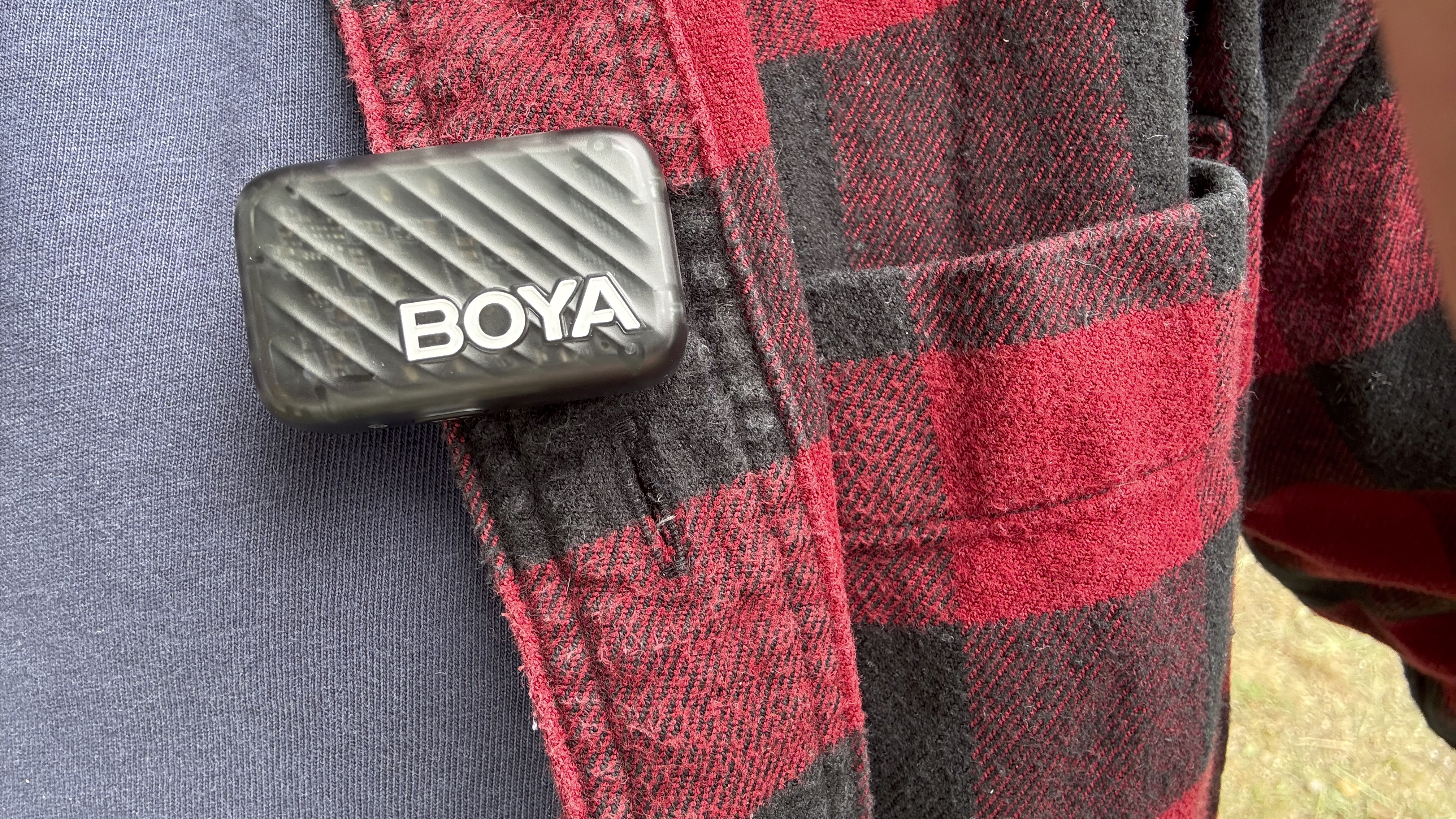
Circling back to AI-powered noise reduction, the Boyamic 2 does a better job than its predecessor when it comes to reducing unwanted background noise. This is down to the ever-evolving nature of AI and the presence of a built-in AI chip in each Boyamic 2 receiver. This chip is powered by DNNs (deep neural networks) that have been trained on over 700,000 noise samples. You can use two levels of noise reduction - Strong mode suppresses up to -40dB background sounds while keeping a voice audible. For less noisy backgrounds, you can switch to Light mode, which helps preserve some of the location’s natural ambience. To hear the effectiveness of this noise reduction feature, check out my test video in the Performance section.

The Boyamic 2’s receiver also sees some design improvements thanks to a button that you can press to select properties such as mic input levels and rotate to adjust them. The colour OLED display shows you helpful information such as which mic is making an onboard recording and which has been muted (and you can trigger those settings via the receiver’s OLED screen). When receiving a signal from both mics, you can see two smaller audio level indicators side-by-side. If you’re only using one transmitter mic, then the audio indicator grows to fill the OLED screen, which is a welcome (and useful) design touch. The receiver’s OLED screen is touch-sensitive, which makes it a quick and easy job to adjust mic properties such as tweaking the gain or activating onboard recording and noise reduction.
The receiver can be attached to a smartphone via the supplied USB-C plug (or to a camera via its TRS socket). You can also monitor the audio signal transmitting to the receiver courtesy of its built-in headphone socket, which is an essential feature for a pro sound recordist, as you can hear problems such as signal drop-out and then re-take the scene.
Boyamic 2: Performance
To test the Boyamic 2 kit, I took it to two different locations. I started at London’s Barbican Centre because here I could do a distance test, safe in the knowledge that no one would be around to steal my tripod-mounted iPhone when I walked away from it. Due to the windy nature of the location, I popped a supplied ‘dead cat’ style windshield onto the transmitter mic clipped to my shirt. I’d recently tested the cheaper Boyalink 3 in the same location and had difficulty attaching its windshield.
It was a much easier process to clip the windshield to the Boyamic 2 transmitter, though it did feel a little loose with the potential to drop off. Fortunately, the windshield stayed attached to me during my distance test.
As you’ll see (and hear) from my test video, the signal from the Boyamic 2 transmitter began to drop out noticeably at approximately 15 metres when I walked away from the camera, and the mic lost line of sight with the transmitter. This dropout continued as I walked around 60 metres away, though the signal was loud and clear whenever I turned to face the camera. In most cases, people will be talking to the camera (rather than facing away from it), so drop-out isn’t a major issue, plus the option to activate onboard recording solves any drop-out issues, as I discovered in a later test.
My transmitted voice sounded clean and clear, and thanks to a negligible latency of 25 milliseconds, it remained in sync with my mouth, so there was no need for any post-production tweaking of the audio channel’s position relative to the video clip.
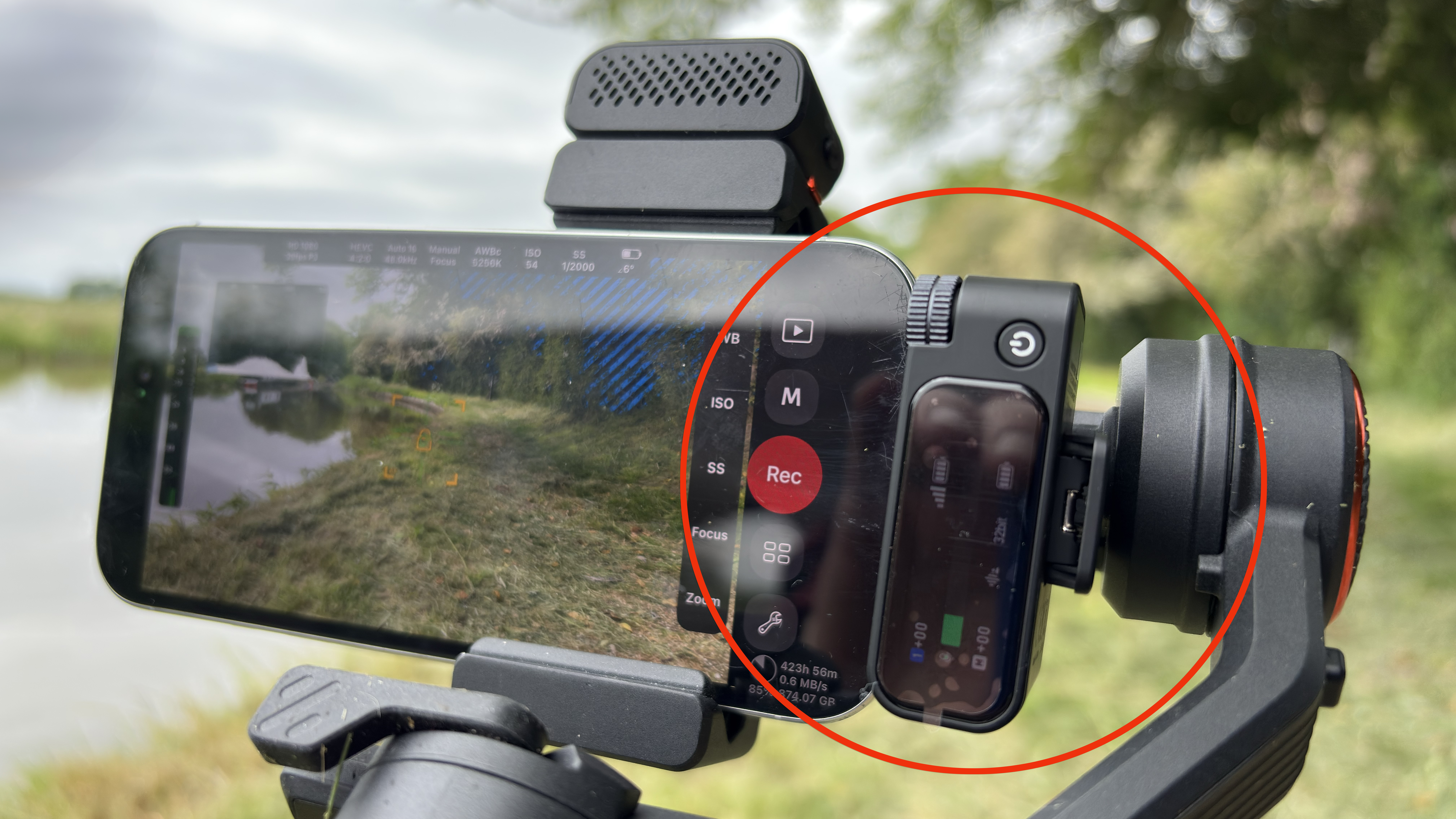
After the distance test, I sat by a noisy fountain and triggered the AI-assisted noise reduction feature. The simultaneously released Boyamic 2 and the Boyalink 3 both offer noise reduction, but on the cheaper Boyalink 3, this made my voice sound warbly and a bit metallic. The more expensive Boyamic 2’s superior deep neural network-powered chip did a much better job, removing the white noise of the gurgling fountain while preserving my voice. Have a listen to the test video.
For my second Boyamic 2 test, I took it to the countryside to test the onboard recording feature. By default, the audio quality broadcast by the mic is a pro-grade level 48KHz/24-bit signal. If you use the transmitter mic’s onboard recording feature, you can record in 32-bit, which should, in theory, sound even better than the transmitted audio.
As I walked away from the camera, I did indeed get some signal drop-out, but as you’ll hear from my test video, I was able to plug any audio gaps thanks to onboard recording. It was a simple matter to plug the Boyamic 2 transmitter into my MacBook Air and drag the onboard-recorded .wav file into Final Cut Pro’s timeline to replace the transmitted audio track. In the test video, I switch between the 24-bit transmitted audio and the 32-bit onboard recording. In theory, we should be able to hear a difference in quality, but to my ears, both clips sound equally great!
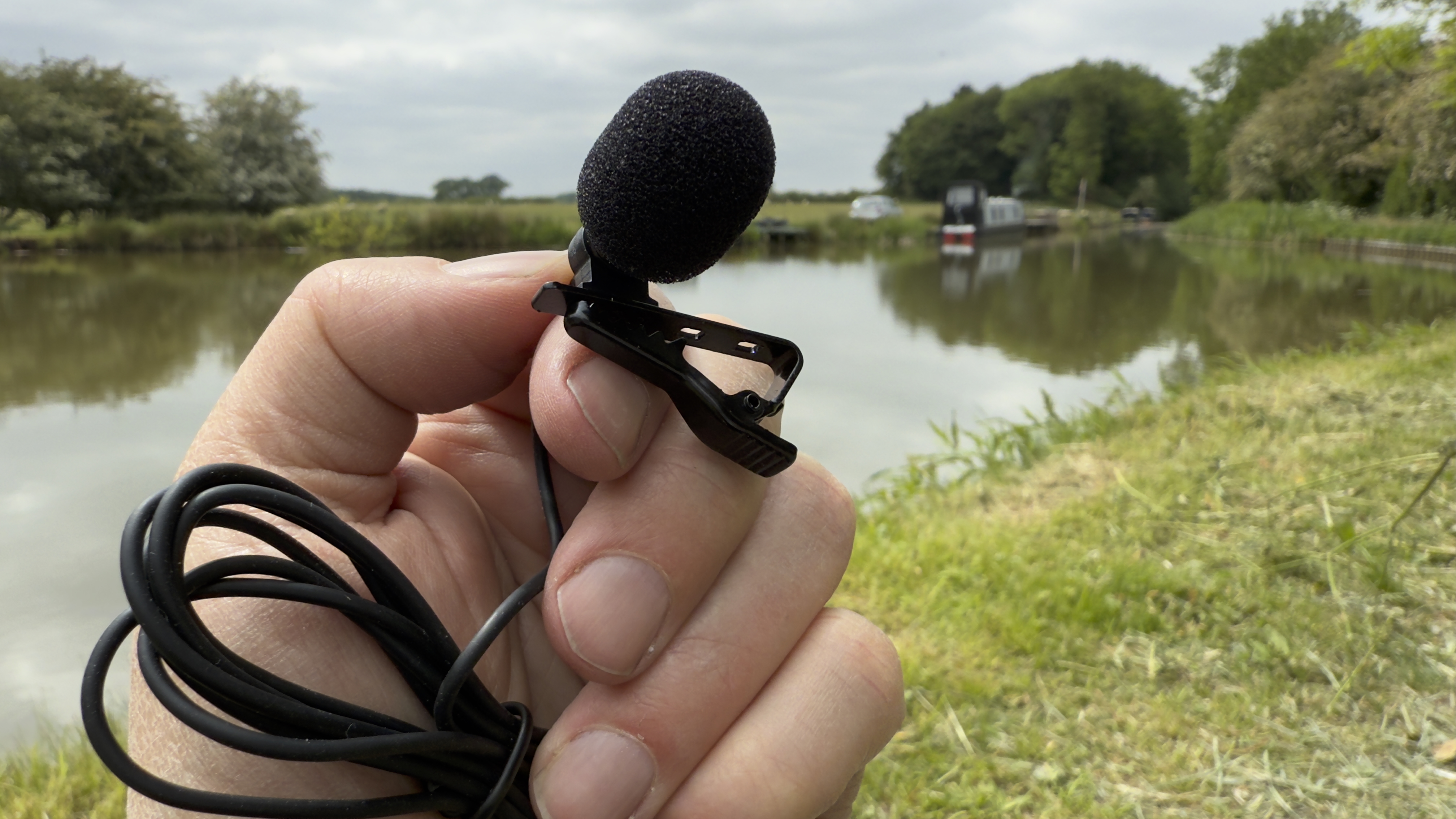
Boyamic 2: Verdict
2025’s Boyamic 2 is certainly superior to 2024’s original Boyamic in relation to design and performance. We’ve lost the chunky colour-coded buttons of the original Boyamic’s transmitters, and the smaller Boyamic 2 transmitter now looks more professional and discreet when clipped to a subject’s shirt.
The AI-powered chip inside the Boyamic 2 does a better job of reducing background noise than its predecessor without adding too much distortion to the subject’s voice. The Boyamic 2 costs more than the simultaneously released consumer-targeted Boyalink 3, but the effective AI-powered noise reduction and the safety net of onboard recording make the Boyamic 2 a much more attractive choice for professional video makers who can’t afford to compromise on sound quality or lose a take to drop-out.
Features ★★★★☆ | A touch-sensitive OLED screen enables you to adjust a host of mic properties via the receiver and the tactile control knob is a welcome touch. |
Design ★★★★★ | The reduction of the Boyamic 2’s transmitter size and its more subtle buttons give it a more professional look than its Boyamic predeccesor. |
Performance ★★★★☆ | AI-powered noise reduction is effective and the onboard recording feature plugs any holes caused by signal-drop out. |
Value ★★★★☆ | For a pro-level mic the Boyamic 2 is reasonably priced (and comparable to the similarly specced Rode Wireless Go 3. |
Alternatives
If you’re a fan of the Boya brand but can’t afford the more expensive Boyamic 2, then the equally new Boyalink 3 will still enable you to capture decent quality audio wirelessly from a distance. It has inferior noise reduction capabilities and lacks onboard recording, but you get what you pay for.
Read the full Boyalink 3 review
The RØDE Wireless Go 3 also boasts an onboard recording feature. The recording starts as soon as you turn on the transmitter, so there’s no danger of you forgetting to activate this useful feature. It ‘saved my bacon’ on a recent shoot when I forgot to turn up the input level on a camcorder, and I was able to restore the missing sound recorded on the transmitter!
Read the full RØDE Wireless Go 3 review
George has been freelancing as a photo fixing and creative tutorial writer since 2002, working for award winning titles such as Digital Camera, PhotoPlus, N-Photo and Practical Photoshop. He's expert in communicating the ins and outs of Photoshop and Lightroom, as well as producing video production tutorials on Final Cut Pro and iMovie for magazines such as iCreate and Mac Format. He also produces regular and exclusive Photoshop CC tutorials for his YouTube channel.
You must confirm your public display name before commenting
Please logout and then login again, you will then be prompted to enter your display name.

